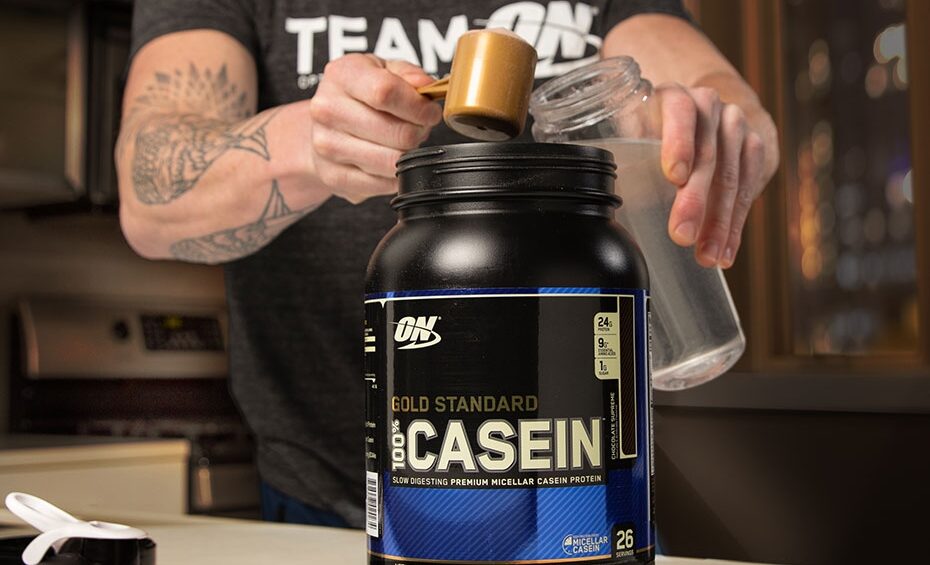What Is Casein?
A typical glass of milk is about 88% water, 5% carbohydrates, 4% fat and 3% protein. Slow digesting casein makes up around 80% of the protein with fast digesting whey providing the other 20%. A serving of powdered casein provides half the Daily Value for calcium compared to less than 10% in a scoop of whey.
Both casein and whey are complete proteins, providing all the Essential Amino Acids (EAAs) including the three Branched Chain Amino Acids (BCAAs) Leucine, Isoleucine, and Valine. EAAs play important roles in muscle building and recovery. Your body can’t make them, so EAAs must be taken in through food.
History of Casein
In ancient Egypt, casein was used as a binder for pigments. In the 1900s, it was used as a plastic to make buttons, knitting pins and other items.
We mostly know casein for food sources like cottage cheese, Greek yogurt, and supplements. Optimum Nutrition was first to market a micellar casein powder in 2005. Micellar is considered the natural form of casein.
Supplementing With Casein Protein
Casein is a good choice for times when nutrients won’t be available for a while. Usage occasions include between meals and before bed. Its slow digestion delivers amino acids to recovering muscles for longer than fast-digesting whey protein.
As a powdered mix, a 34 gram serving of micellar casein provides 24 grams of protein containing nearly 5 grams of Branched Chain Amino Acids (BCAAs) and nearly 5 grams of glutamine – the most abundant amino acid in muscle. This nutrient profile can help active adults build muscle size and strength.
Source by — optimumnutrition.com







